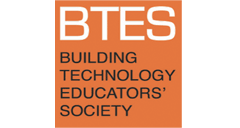Transdisciplinarity & Innovation: Smart Materials in Landscape Architecture Education
Author ORCID Identifier
DOI
https://doi.org/10.7275/46c0-8p22
Abstract
Designed landscapes are physical manifestations of natural, cultural, and technological forces. As such, they can physically embody technologies that support sustainable practices, and provide experiences that foster their cultural acceptance. However, the current focus of sustainable design in the landscape architecture profession has centered on ecological performance, largely ignoring the role of aesthetics and new material practices. In particular, the incorporation of energy-generating materials, such as smart materials, has remained largely unexplored. As a result, new methods for expanding engagement with materials and technologies are needed.
The need to address technological innovation while providing meaningful aesthetic experiences points to the importance of transdisciplinarity as part of the design pedagogy focused on sustainability. Transdisciplinarity challenges the conception of knowledge silos, the distinction between the objective and subjective, and embraces different ways of knowing that relate to different levels of reality.1 In doing so, it presents opportunities for the integration of artful doing as part of technological innovation by simultaneously embracing the analytical, the emotional and the sensorial.2
This paper presents student work developed at the University of Massachusetts Amherst that explores the incorporation of smart materials for design applications. Landscape installations and prototypes developed in two courses: Material Experiments in Landscape Architecture and Step and Flash: Creating a Piezoelectric Walkway, will illustrate how transdisciplinary explorations led to technological innovations that reduce energy consumption while appealing to the senses. Based on this experience, an initial set of guidelines for introducing transdisciplinary practices in design pedagogy is presented. This paper calls attention to the value of transdisciplinarity as a way to engage technology and further engage students with a more holistic approach to sustainable design.
Recommended Citation
Aragon, Carolina
(2019)
"Transdisciplinarity & Innovation: Smart Materials in Landscape Architecture Education,"
Building Technology Educator's Society: Vol. 2019
Caryn Brause, Peggi L. Clouston, Naomi Darling (Eds.), Amherst, MA, 2019.
https://doi.org/10.7275/46c0-8p22
Available at:
https://scholarworks.umass.edu/btes/vol2019/iss1/1

